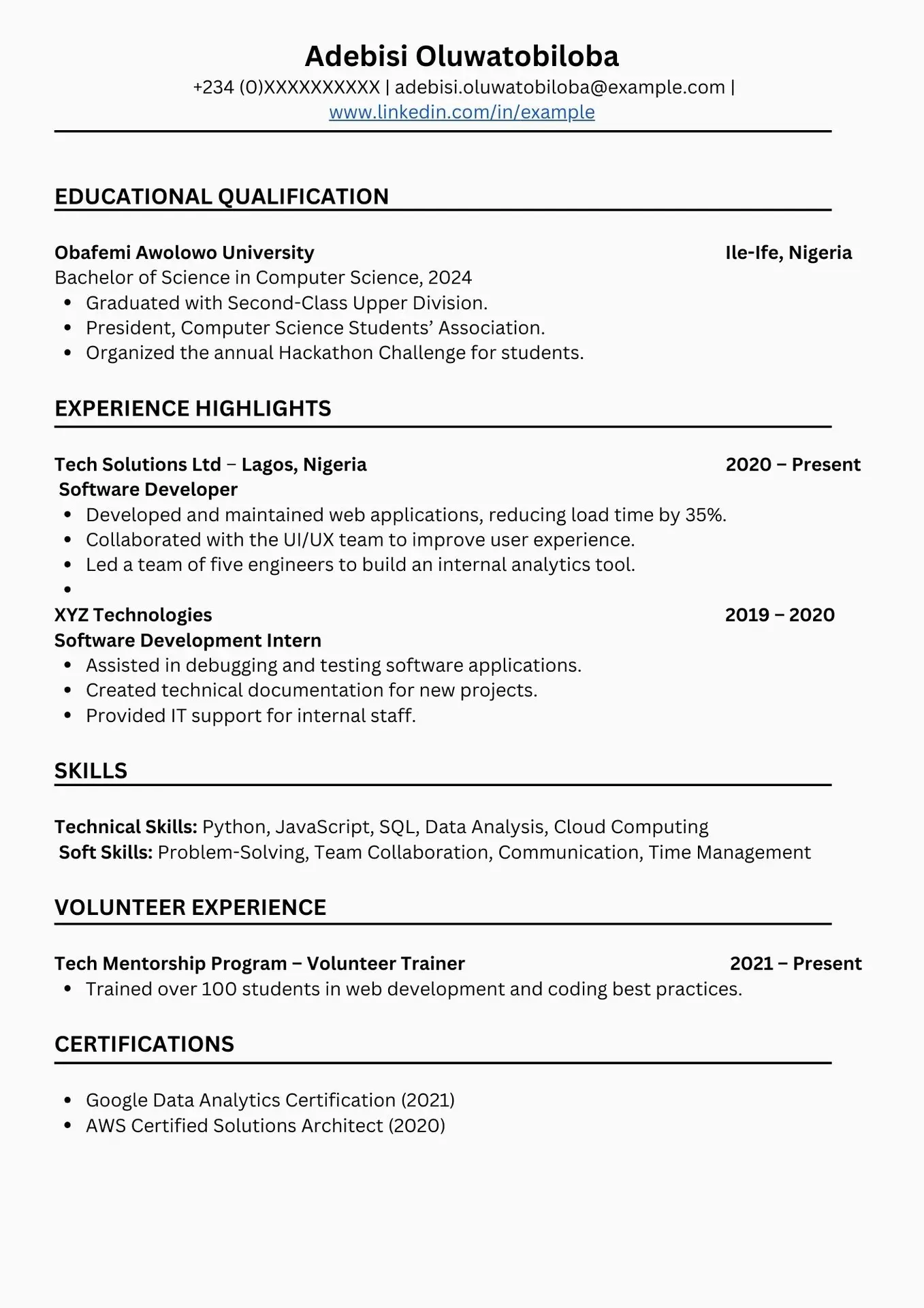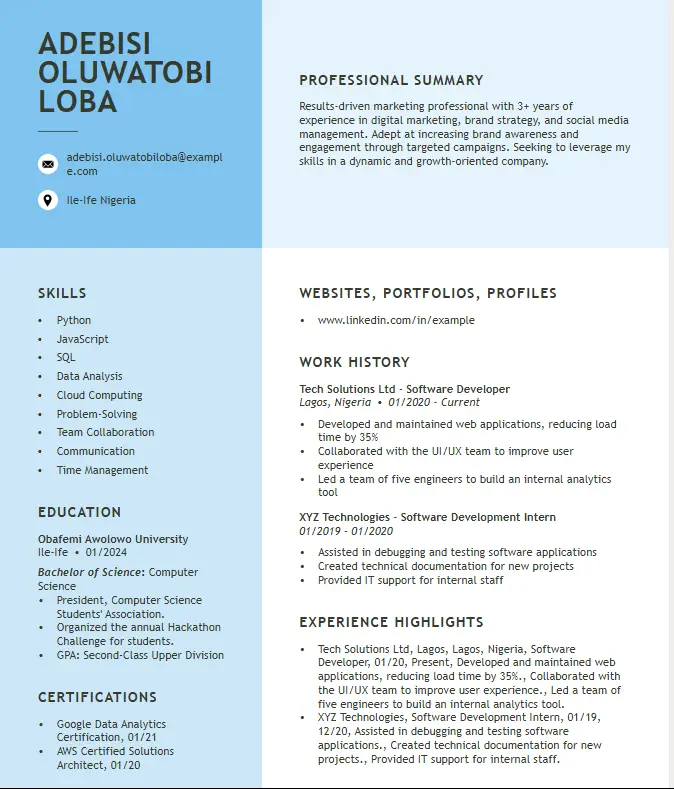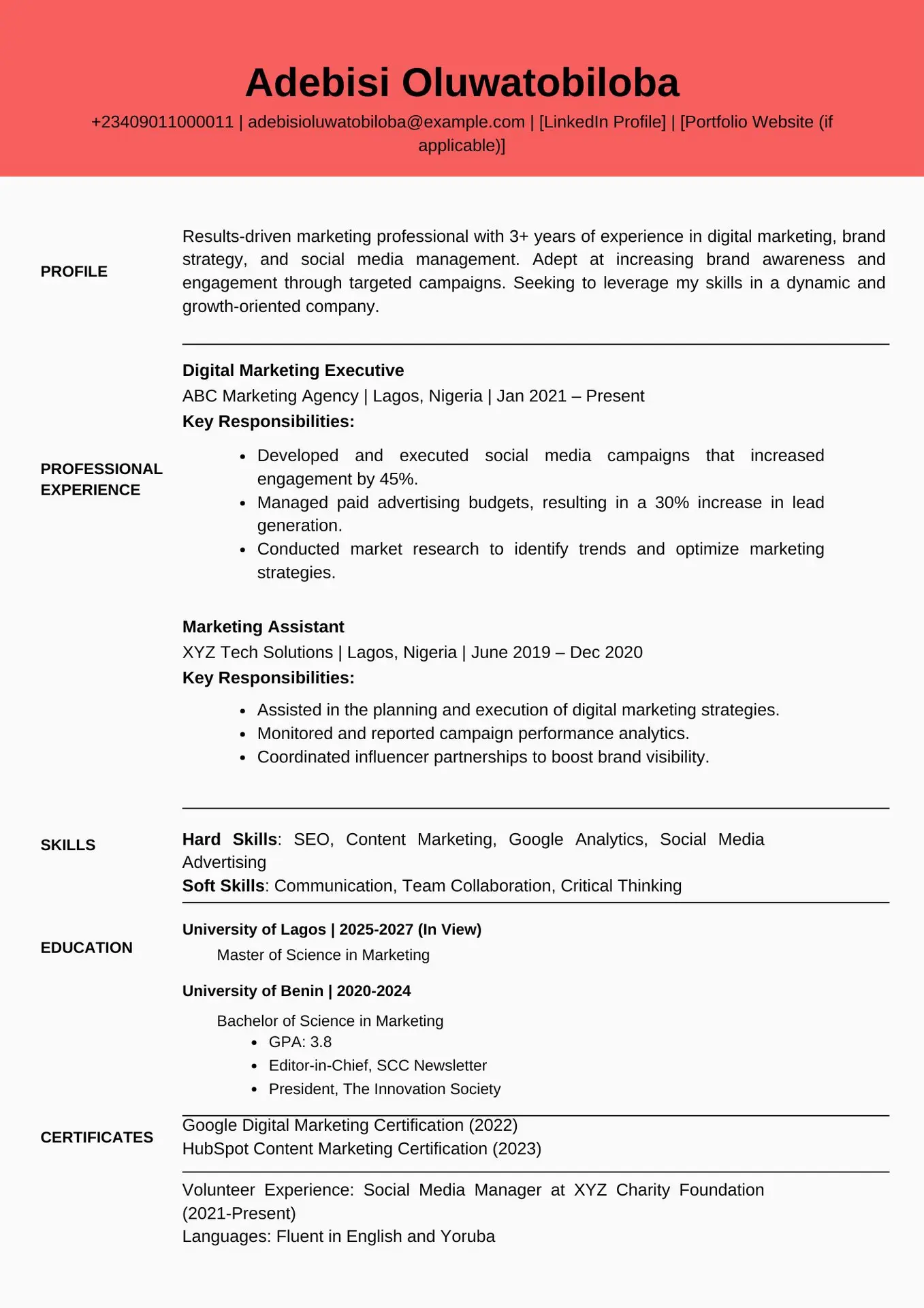Your resume is your first impression on a hiring manager. Choosing the right resume format can make or break your chances of landing an interview. Whether you’re a recent graduate, an experienced professional, or making a career switch, selecting the best resume format is essential to showcasing your skills and experience effectively.
Types of Resume Formats
There are three main resume formats used across industries:
1. Chronological Resume (Best for Experienced Professionals)
A chronological resume lists your work experience in reverse chronological order, starting with your most recent job. It highlights career progression and is ideal for candidates with a steady work history.
When to Use:
- You have a solid employment history with no significant gaps.
- You want to emphasize career growth and promotions.
- You’re applying for jobs in traditional industries like finance, healthcare, or education.
Structure:
- Contact Information
- Education
- Work Experience (most recent first)
- Skills
- Certifications (if applicable)
2. Functional Resume (Best for Career Changers or Those with Gaps)
A functional resume focuses on skills and qualifications rather than work history. It’s perfect for job seekers with employment gaps, freelancers, or career changers looking to highlight transferable skills.
When to Use:
- You’re shifting to a new industry and need to emphasize skills over job titles.
- You have employment gaps.
- You have a diverse work history or freelance experience.
Structure:
- Contact Information
- Summary or Objective
- Key Skills and Competencies
- Work Experience (brief, without specific dates)
- Education
- Certifications (if applicable)
3. Combination (Hybrid) Resume (Best for a Balanced Approach)
A combination resume blends elements of both chronological and functional formats. It highlights both skills and work experience, making it ideal for professionals with strong expertise and a diverse work background.
When to Use:
- You have strong skills relevant to the job and want to showcase them upfront.
- You have a mix of work experience and freelance projects.
- You want to balance job titles with skill-based achievements.
Structure:
- Contact Information
- Summary or Objective
- Skills and Competencies
- Work Experience (reverse chronological order)
- Education
- Certifications (if applicable)

How to Choose the Best Resume Format
- Assess Your Experience Level:
- If you have years of experience in the same field, go for a chronological resume.
- If you’re making a career switch, a functional or hybrid resume is a better fit.
- Consider the Job Description:
- Tailor your resume to match the requirements of the job.
- If the role is skill-based (e.g., tech jobs, freelancing), a functional format works well.
- If the role values experience (e.g., management, finance), a chronological format is ideal.
- Think About Readability:
- Recruiters spend an average of 6-7 seconds on a resume before deciding if a candidate is a fit.
- Choose a format that clearly presents your strengths and qualifications.
Final Tips for an Effective Resume
- Keep it concise and professional (1-2 pages max).
- Use clear headings and bullet points for easy reading.
- Customize your resume format based on the industry and job level.
- Proofread for grammar and formatting errors.
- Always tailor your resume for each application to increase your chances of getting noticed.
Conclusion
Choosing the right resume format is key to making a strong first impression. Whether you’re a seasoned professional, a recent graduate, or transitioning careers, selecting the right structure can highlight your strengths and help you land your next job. Use the format that best aligns with your experience and career goals, and don’t forget to tailor it for each job application!
Need help crafting a perfect resume? Check out WESOnline for expert templates and resume-building tips.

